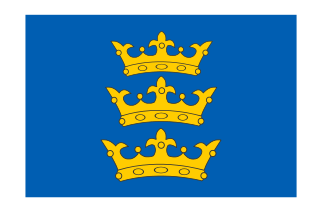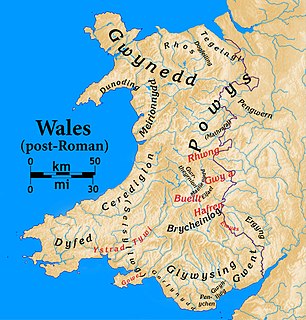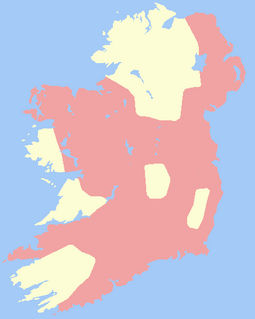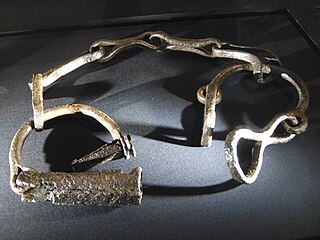External links
-
 Media related to Middle Ages in Ireland at Wikimedia Commons
Media related to Middle Ages in Ireland at Wikimedia Commons
Ireland in the Middle Ages may refer to:

Irish states have existed under a number of different names for nearly a thousand years. A unified Irish proto-state had been coalescing from the multitude of small tribal kingdoms that existed circa AD 500, similar to the pattern elsewhere in Europe. The independent development of the several dynastic regional kingdoms into a nascent national kingdom, however, was extinguished by the Norman invasion of Ireland in 1169, although these regional Gaelic Ireland kingdoms continued to resist for centuries until the Tudor conquest of Ireland was completed in the 17th century.

The Lordship of Ireland, sometimes referred to retroactively as Norman Ireland, was the part of Ireland ruled by the King of England and controlled by loyal Anglo-Norman lords between 1177 and 1542. The lordship was created following the Norman invasion of Ireland in 1169–1171. It was a papal fief, granted to the Plantagenet kings of England by the Holy See, via Laudabiliter. As the Lord of Ireland was also the King of England, he was represented locally by a governor, variously known as the Justiciar, Lieutenant, Lord Lieutenant or Lord Deputy.
The Danes were a North Germanic tribe inhabiting southern Scandinavia, including the area now comprising Denmark proper, and the Scanian provinces of modern-day southern Sweden, during the Nordic Iron Age and the Viking Age. They founded what became the Kingdom of Denmark. The name of their realm is believed to mean "Danish March", viz. "the march of the Danes", in Old Norse, referring to their southern border zone between the Eider and Schlei rivers, known as the Danevirke.

The High Kings of Ireland were sometimes historical and sometimes legendary figures who had, or who are claimed to have had, lordship over the whole island of Ireland.

The Iverni were a people of early Ireland first mentioned in Ptolemy's 2nd century Geography as living in the extreme south-west of the island. He also locates a "city" called Ivernis in their territory, and observes that this settlement has the same name as the island as a whole, Ivernia. The name Iverni has been derived from Proto-Indo-European *PiHwerjoHn, "the fertile land". It was probably once the name given to all the peoples of Ireland, but by Ptolemy's time had a more restricted usage applicable to the inhabitants of the south-west. These Iverni can be identified linguistically with the Érainn, a people attested in Munster and elsewhere in the early Middle Ages.
Dark Ages or Dark Age may refer to:

The history of Ireland 800–1169 covers the period in the history of Ireland from the first Viking raids to the Norman invasion. The first two centuries of this period are characterised by Viking raids and the subsequent Norse settlements along the coast. Viking ports were established at Dublin, Wexford, Waterford, Cork and Limerick, which became the first large towns in Ireland.

The Anglo-Norman invasion of Ireland took place during the late 12th century, when Anglo-Normans gradually conquered and acquired large swathes of land from the Irish, over which the kings of England then claimed sovereignty, all allegedly sanctioned by the purported Papal bull Laudabiliter. At the time, Gaelic Ireland was made up of several kingdoms, with a High King claiming lordship over most of the other kings. The Norman invasion was a watershed in Ireland's history, marking the beginning of more than 800 years of direct English/Welsh and, later, British, involvement in Ireland.
Jackeen is a pejorative term for someone from Dublin, Ireland. The Oxford English Dictionary defines it as a "contemptuous designation for a self-assertive worthless fellow", citing the earliest documented use from the year 1840.

Gaelic Ireland was the Gaelic political and social order, and associated culture, that existed in Ireland from the prehistoric era until the early 17th century. Before the Norman invasion of 1169, Gaelic Ireland comprised the whole island. Thereafter, it comprised that part of the country not under foreign dominion at a given time, i.e. "The Pale". For most of its history, Gaelic Ireland was a "patchwork" hierarchy of territories ruled by a hierarchy of kings or chiefs, who were elected through tanistry. Warfare between these territories was common. Occasionally, a powerful ruler was acknowledged as High King of Ireland. Society was made up of clans and, like the rest of Europe, was structured hierarchically according to class. Throughout this period, the economy was mainly pastoral and money was generally not used. A Gaelic Irish style of dress, music, dance, sport, social gathering, architecture, and art can be identified, with Irish art later merging with Anglo-Saxon styles to create Insular art.

Wales in the early Middle Ages covers the time between the Roman departure from Wales c. 383 and the rise of Merfyn Frych to the throne of Gwynedd c. 825. In that time there was a gradual consolidation of power into increasingly hierarchical kingdoms. The end of the early Middle Ages was the time that the Welsh language transitioned from the Primitive Welsh spoken throughout the era into Old Welsh, and the time when the modern England–Wales border would take its near-final form, a line broadly followed by Offa's Dyke, a late eighth-century earthwork. Successful unification into something recognisable as a Welsh state would come in the next era under the descendants of Merfyn Frych.

Bronze Age Britain is an era of British history that spanned from c. 2500 until c. 800 BC. Lasting for approximately 1,700 years, it was preceded by the era of Neolithic Britain and was in turn followed by the period of Iron Age Britain. Being categorised as the Bronze Age, it was marked by the use of copper and then bronze by the prehistoric Britons, who used such metals to fashion tools. Great Britain in the Bronze Age also saw the widespread adoption of agriculture.
Francis Xavier Martin, OSA was an Irish cleric, historian and activist.
Kathleen Winifred Hughes was an English historian, her specialisation was Irish ecclesiastical history, particularly the early Christian Church in Ireland.

British rule in Ireland was the control of territories, parts of, or the whole island of Ireland by an English or British monarch and/or government. British involvement in Ireland began with the Anglo-Norman invasion of Ireland in 1169. Most of Ireland gained independence from Great Britain following the Anglo-Irish War. Initially formed as a Dominion called the Irish Free State in 1922, the Republic of Ireland became a fully independent republic following the passage of the Republic of Ireland Act in 1949. Northern Ireland remains part of the United Kingdom as a constituent country.

The Insular Celts were speakers of the Insular Celtic languages in the British Isles and Brittany. The term is mostly used for the Celtic peoples of the isles up until the early Middle Ages, covering the British–Irish Iron Age, Roman Britain and Sub-Roman Britain. They included the Celtic Britons, the Picts, and the Gaels.

The National Museum of Ireland – Archaeology is a branch of the National Museum of Ireland located on Kildare Street in Dublin, Ireland, that specialises in Irish and other antiquities dating from the Stone Age to the Late Middle Ages.

The siege of Wexford took place in early May 1169 and was the first major clash of the Norman invasion of Ireland. The town was besieged by a combined force of Normans under Robert Fitz-Stephen and soldiers loyal to Diarmait mac Murchadha. After being ousted as King of Leinster, Diarmait had recruited the Normans to help him regain control of Leinster and the semi-independent Norse-Gaelic seaport of Wexford. Although the attackers did not breach the town's walls, Wexford surrendered after almost two days and came under Norman control.

Slavery had already existed in Ireland for centuries by the time the Vikings began to establish their coastal settlements, but it was under the Norse-Gael Kingdom of Dublin that it reached its peak, in the 11th century.
The following outline is provided as an overview of and topical guide to the history of the British Isles: